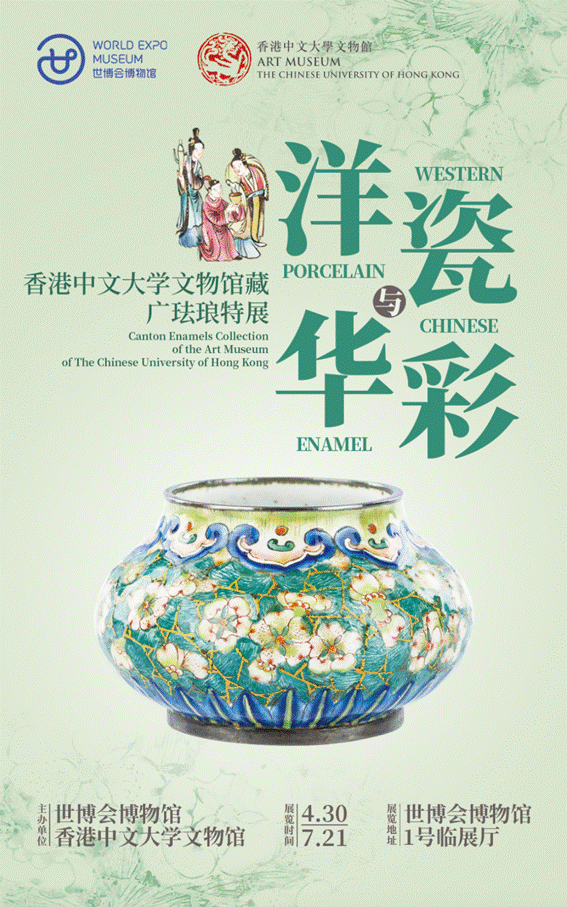Today Opening��Western Porcelain and Chinese Enamel, Aesthetic Journey of East- West Culture
���ڣ�04-30-2024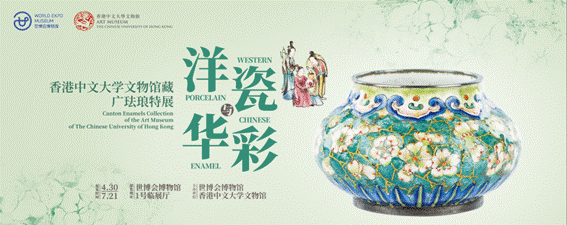
����"Western Porcelain & Chinese Colors - Canton Enamel Collection of the Art Museum of The Chinese University of Hong Kong" co-organized by the World Expo Museum and the Art Museum of The Chinese University of Hong Kong. The exhibition was launched on April 30 in the World Expo Museum No. 1 temporary exhibition hall, the exhibits on display including 136 pieces / sets of Canton enamel, lasted until July 21st.
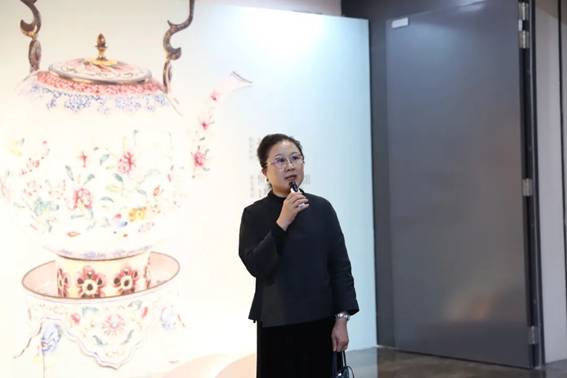
Speech by Mr. Liu Wentao, Director of the World Expo Museum
����Liu Wentao, Director of the World Expo Museum, said in her speech that the World
����World Expo Museum itself has the mission of promoting international exchanges, which can be said to be genetically determined, and the integration of East and West has always been one of our characteristics of the direction of the exhibition, and this time, we are honored to cooperate with the Art Museum of The Chinese University of Hong Kong, to continue to do in-depth research and display of the concept of cultural exchanges on the basis of a special carrier of wide-enameled glass to deepen the understanding of viewers on the diversity of cultural exchanges.
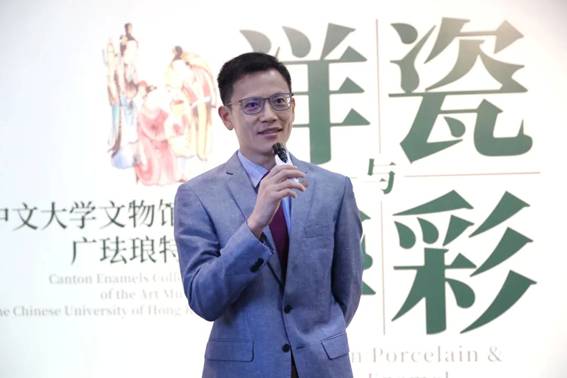
The Fifth Curator of the Art Museum of The Chinese University of Hong Kong, Artistic Advisor to the Hong Kong Arts Development Council Mr. Yao Jinzhuang
����The Fifth Curator of the Art Museum of The Chinese University of Hong Kong Mr. Yao Jinzhuang mentioned that Shanghai and Hong Kong are both the windows of China to the outside world, and it is significant that the exhibition is displayed here. In addition, the exhibition design is very good at highlighting the beauty of the Canton enameled artifacts.
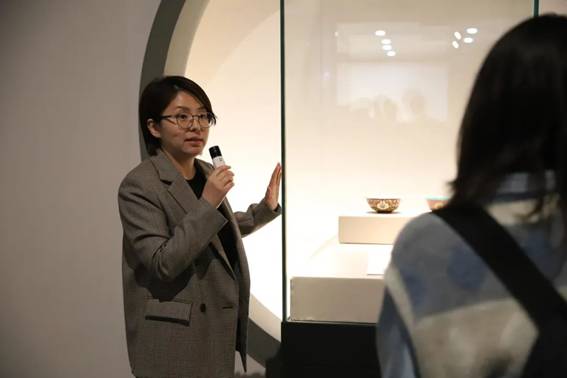
Content curator Hong Lina's guide
����Shanghai and Hong Kong Collaborate to Paint a New Chapter of Art Integration
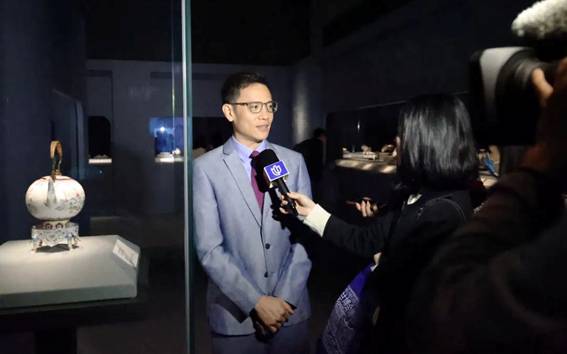
The Fifth Curator of the Art Museum of The Chinese University of Hong Kong, Artistic Advisor to the Hong Kong Arts Development Council Mr. Yao Jinzhuang being interviewed
����As a cultural metropolis, Shanghai has a vibrant modern culture, where East meets West, making it the frontline of East-West cultural exchanges. Hong Kong has remarkable achievements in cultural preservation and dissemination, as represented by the Canton Enamel Collection at the Art Museum of The Chinese University of Hong Kong, which represents cultural heritage and promotion. This special exhibition demonstrates the joint efforts of Shanghai and Hong Kong venues in cultural heritage and innovation. The sharing of cultural resources between Shanghai and Hong Kong can provide a broader platform for cultural exchanges between the two places.
����Fusion of East and West
����The exhibition not only starts from the concept of blending the East and the West again, but also deeply interprets the exchanges and fusion of East and West cultures at the artistic level, looking forward to showing the dialogues and fusion of different cultures through the form of art.
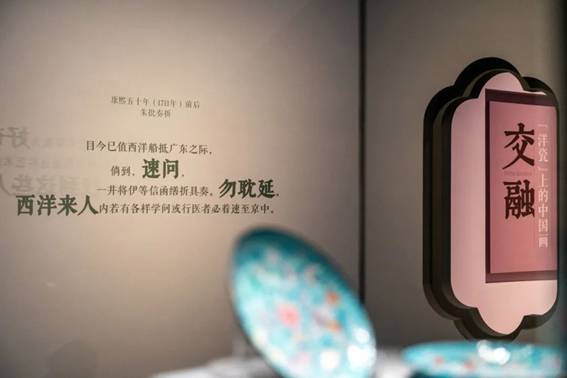
����As an art form introduced to China from the West in the late 17th century, Canton Enamel has played an important role in the history of cultural exchange between China and the West. The process of blending the East and the West is a reminder of the trade and cultural exchanges between China and the world at that time.
����The narrative structure from "Interaction" to "Integration" to "Exchange" not only presents the process of cultural integration, but also reflects the two-way flow of cultural influence. This historical trajectory of two-way exchange provides a more comprehensive and objective perspective for understanding the cultural fusion between East and West.
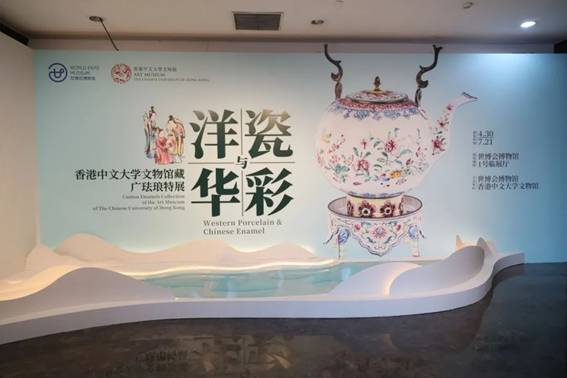
����"Foreign porcelain��, originating in the West, was later recreated by Chinese craftsmanship, it was again considered by Westerners as "Chinese enamel". Despite being the same Canton enamel, it was referred to by two different names:"foreign porcelain" and "Chinese enamel". The interaction and dialogue between civilizations commenced.
����Exploring the enamel craft and cultural connotation in depth
����As a product of the fusion of two civilizations, Canton Enamel displays an unparalleled artistic charm with its exquisite craftsmanship, delicate and clear color and texture. This exhibition showcases the copper-based painted enamel produced in Guangdong during the Qing Dynasty, specifically during the Kangxi, Yongzheng and Qianlong periods. This type of enamel ware is mainly made of copper as the base material and includes various crafts such as painted, basse-taille, cloisonné and champlevé enamel. Unfortunately, during the Qing Dynasty, only painted enamel has been preserved from the Canton enamel craft, while the others have been lost.
����As a product of the fusion of two civilizations, Canton enamel has demonstrated unparalleled artistic charm with its exquisite craftsmanship, delicate and clear color and texture. This exhibition showcases the copper enamel produced in Guangdong during the Qing Dynasty, represented by the Kangxi, Yongqian and Qing dynasty. Canton enamel includes many types of crafts such as painted enamel, transparent enamel, silk enamel and burin enamel. At present, only painted enamel has been handed down, while the rest have been lost.
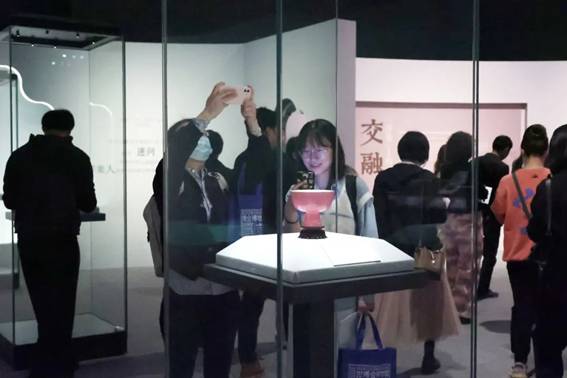
����Each enameled object is a storyteller. The exhibition explores the fine patterns and decorations on the surface of the objects, telling the rich background and stories behind them in every detail and stroke, and unveiling a prelude to the cultural exchanges between the East and the West. From court to folk, from myth to tradition, these stories form a colorful world that gives us a glimpse into the cultural landscape of the past.
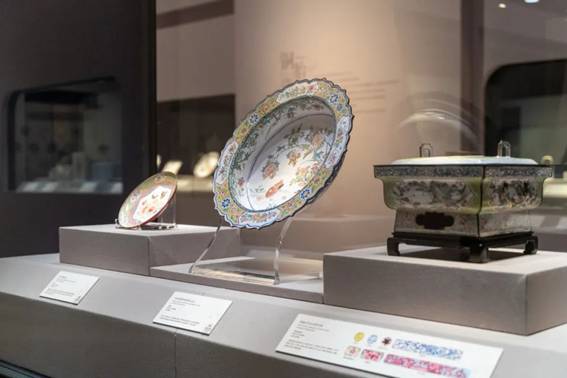
����From the fine craftsmanship and patterns on the surface of the enameled objects to the rich background and stories of the times behind them, visitors can explore the historical traces of East-West exchanges in this "small but beautiful" and "small but deep" exhibition. At the same time, immerse yourself in the colorful world of court life, folk life, myths and legends, and traditional customs conveyed by the exhibits.
����Creating an Exhibition of Beauty that Blends into Daily Life
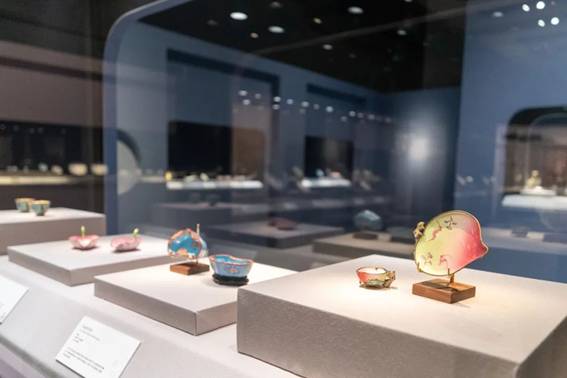
����On the basis of meeting both cultural and aesthetic needs, the exhibition has also designed different thematic colors for each unit. The exhibits are blended into a specific colorful background, forming a beautiful picture that delights the senses and touches the heart. In the classical garden style exhibition route with a sense of hierarchy and transparency, whether it is to capture the elegance of the characters or to memorize a specific scene, each press of the shutter is a precious record of a beautiful slice of life.
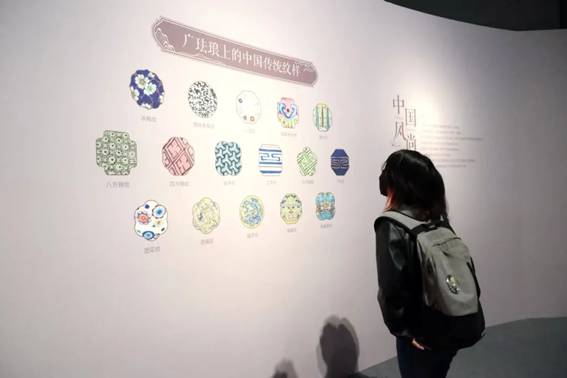
����Through this exhibition, beauty is no longer a remote concept, but is truly integrated into our daily life, so that everyone can feel and own this aesthetic experience from life.
����Interaction, Integration, Exchange
����The exhibition is divided into three units.
����The first unit is "Interaction"-"Porcelain" from the West. After the Kangxi opened the sea, Guangzhou developed into the center of foreign trade of the Qing Dynasty, and European enamel painting technology entered China, which is "Interaction".
����The technique of firing painted enamel in Guangdong can be traced back to the fifty-fifth year of the Kangxi reign (1716) of the Qing Dynasty. Through paintings and background explanations, this unit takes the audience back to the Guangzhou port after the opening of the sea by the Kangxi Emperor, experiencing the historical atmosphere of contact and exchange between Chinese and Western cultures in that era. Through a series of exhibits of Western figures painted with peculiar shapes and figures that resemble both Chinese and Western, it shows us the influence of Western culture on China as well as the exchange and fusion of Chinese and Western cultures at the level of skills.
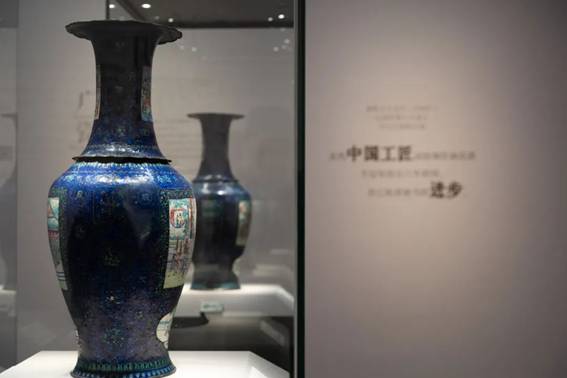
����The second unit of "Integration"- Chinese painting on the "Foreign Porcelain".After the arrival of the art from the west in China, the unique appearance of Canton Enamel was formed by the integration of both Chinese and western civilizations, which is called "fusion".
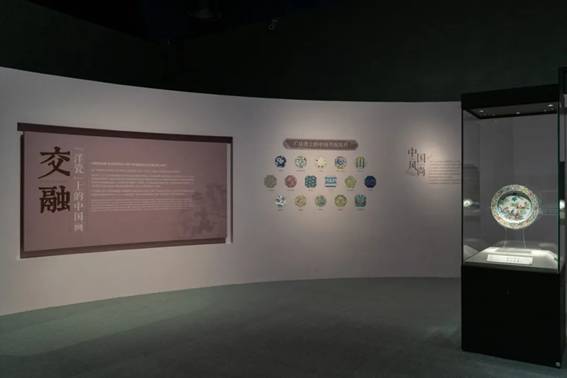
����Highlights the development of Canton enamel and the formation of broad colors. Some Canton artisans combined the Western process of painting enamel with the essence of Chinese painting to create unique works of art. Traditional subjects of Chinese paintings such as flowers, birds, landscapes and figures are reproduced on copper tires. The hard copper tires and the delicate strokes and layers of Chinese paintings form a unique Chinese style.
����Skilled Canton enamel craftsmen were adept at absorbing various images, forms, and techniques, integrating them, and applying them innovatively. Initially, Canton enamel works predominantly portrayed Chinese themes, often imitating the works of famous painters, especially those from the early Qing Dynasty court painting scene. Decorative patterns widely popular in China during the 17th and 18th centuries were also applied by Canton craftsmen to embellish the surfaces of Canton enamel vessels.
����The third unit "Exchange"- from China's " Chinese enamel ". Painted enamel, which originated in the West, returned to the Western market after being Chineseized, and further influenced Asia and other places, which is called " Exchange ".
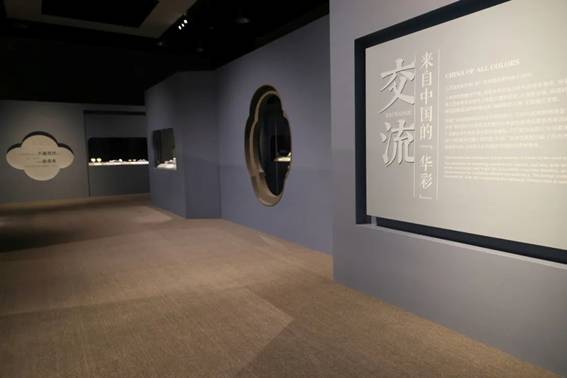
����With its fine craftsmanship and dignified style, the Canton enamel, which was imported to the court, reflected the high standard of royal aesthetics and craftsmanship. Canton enamel exported to the European market was designed to integrate Western usage and traditional Chinese aesthetics, and became an important vehicle for the popularity of the "Chinese style" in the 18th century, which had a significant impact on European artistic aesthetics.
����Over time, the production of Canton enamel gradually moved from the palace to the private sector, and craftsmen and merchants began to create their own brands, promoting the innovation and dissemination of the art of Canton enamel and making it an important part of China's foreign cultural exchanges.
����Through the carefully planned exhibition layout and rich exhibits, visitors are able to gain a deeper understanding of the fact that cultural cross-fertilization is not a one-way transmission, but a two-way interactive and mutual influence process. This understanding helps to promote cross-cultural understanding and respect and civilizational innovation and development.
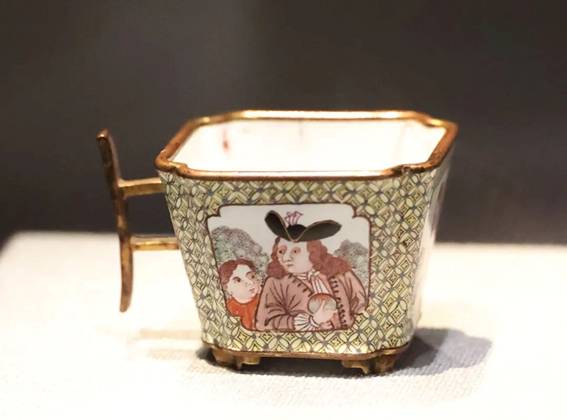
Rectangular Cup with Indented Corners and Westerners in Framed Panels
Qianlong or Yongzheng period of the Qing dynasty
����Western figures are the most creative and expressive decorative motifs in Canton enamel. The combination of Chinese and Western figures and compositions are both present on this small square cup with a single handle. These small cups were often served after dinner to guests and were used to serve strong flavored coffees such as espresso.
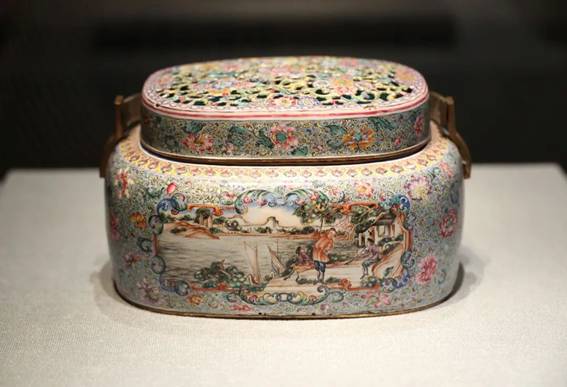
Hand Warmer with Westerners and Landscapes in Framed Panels
Qianlong period of the Qing dynasty
����The two sides of the stove are painted with European port trade pictures, depicting the cityscape in a panoramic view with the focal point perspective of Western painting. This kind of image is 1720s Germany Meissen porcelain early popular decorative motifs, and later spread to China by porcelain and painting enamel ware imitation painting.
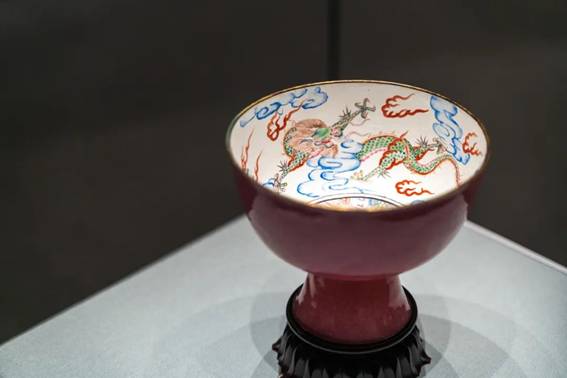
Stem Bowl with Westerners and Cloud Dragons
Qing dynasty, Yongzheng or early Qianlong period
����The heart centre of the bowl is painted with Western women and children, and the outside of the bowl is covered with carmine red glaze. The origin of carmine red can be traced back to the sixteenth century in Europe, but the Canton enamel application method used Jingdezhen porcelain blowing glaze process, reflecting the European color of the Oriental interpretation. Looking closely at the glaze, there are countless tiny particles evenly distributed on it.
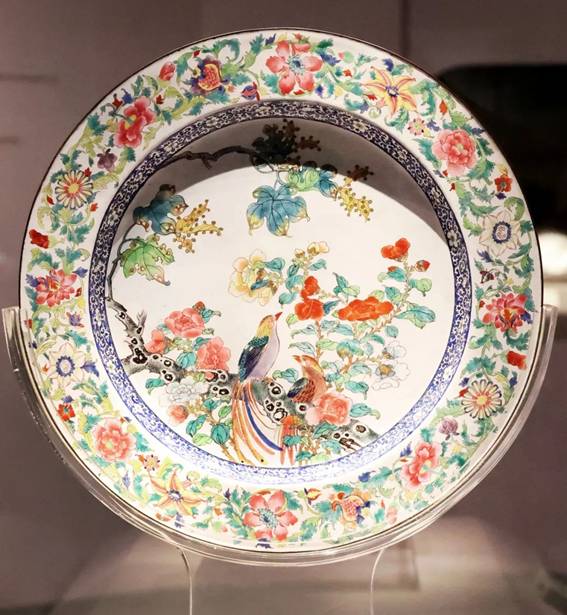
Plate with Birds and Flowers
Qianlong or Jiaqing period of the Qing dynasty
����Flower and bird painting can best reflect the craftsman's skill. The center of this dish is painted with a picture of a camellia and a chicken, and the withered leaves are especially vividly depicted. Around the mouth are painted marshmallows, peonies, chrysanthemums, and flowers. The bottom of the dish is centered on the flowers, and the outer wall is decorated with peonies, moonflowers, marshmallows, asparagus, grasshoppers and butterflies.
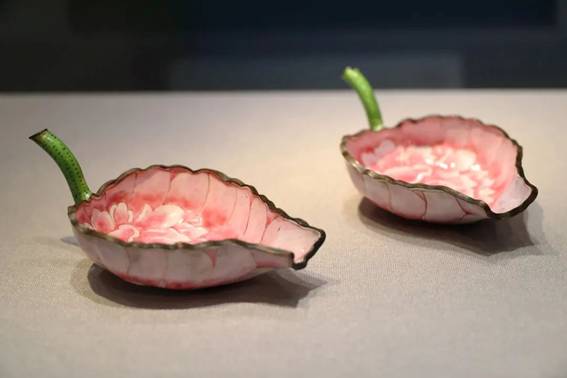
Pair of Cups in the Form of a Lotus Flower
Qianlong or Jiaqing period of the Qing dynasty
����The Pair of Cups in the Form of a Lotus Flower was honored by the literati as the most elegant wine set, and its flower stems were hollowed out and went straight to the bottom for absorbing water. Cups are often imitated in the shape of lotus leaves, but this cup is unique in that it turns a lotus leaf into a peony.
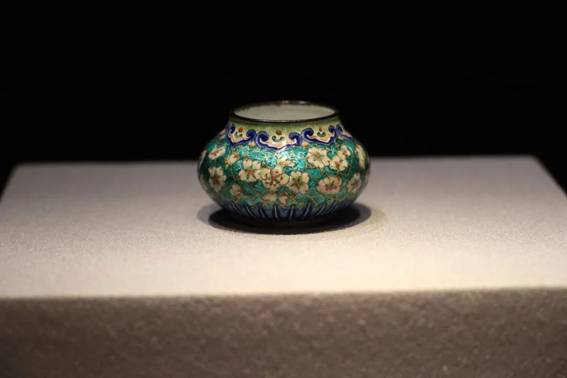
Basse-taille Enamel Jar with the Ice-crackled Plum Pattern
Qianlong period of the Qing dynasty
����Canton craftsmen were particularly good at making Skilled Canton enamel.This small canister uses both Skilled Canton enamel and painted enamel, which shows the high skill of Canton craftsmen. This jar was made by engraving a wave pattern on the body of the jar, then covering it with green transparent enamel, and after firing it was painted with ice-plum motifs and other decorations.
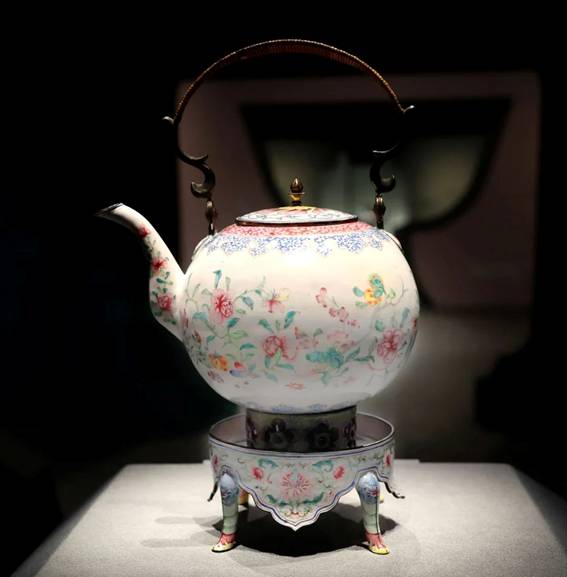
Swing-handled Kettle with Flower, Vegetable, and Fruit Sprays and with a Beast-footed Heater
Qianlong period of the Qing dynasty
����In order to meet the needs of the European market, the export of Canton enamel in the shape of the 18th century's Europe, the shape of this jug is modeled after an English silver jug. Around 1710, silver pots had become the standard for daily tea drinking in Europe.
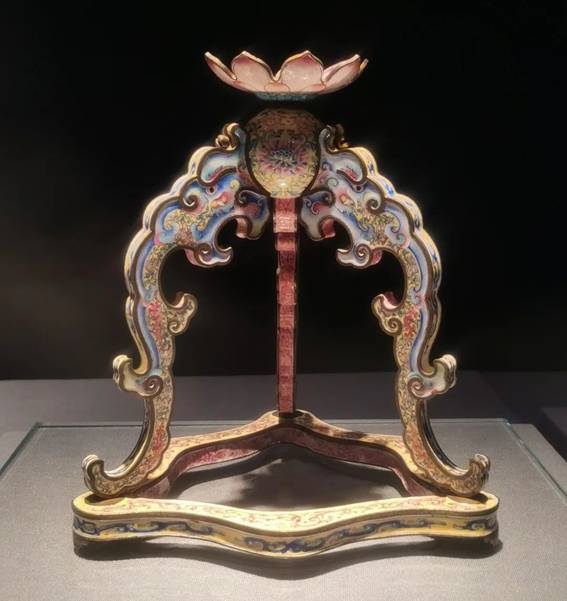
Candlestick in the Form of Three Dragons Supporting a Lotus
Qianlong period of the Qing dynasty
����In the 18th century in Europe, in order to match the change of dining habits, the living room layout is becoming more and more elaborate. Candles were expensive indoor lighting at the time. This candlestick is roughly triangular taper, three dragons supporting the pearl, the pearl inserted a lotus flower to support the candle.
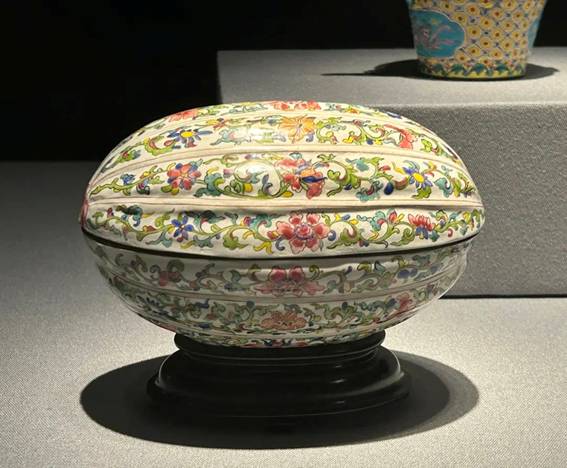
Melon-shaped Box with Interlocking Sprays and Lotus Designs
Qianlong or Jiaqing period of the Qing dynasty
����This box is shaped like a melon, a form presumably of Japanese origin. In the seventeenth century, Europe imported large quantities of Japanese lacquerware. The prototype of this melon box was probably a piece of Japanese lacquerware shipped to Canton by a Dutch merchant, which was copied into enameled wares by a Canton craftsman and then sold to India.
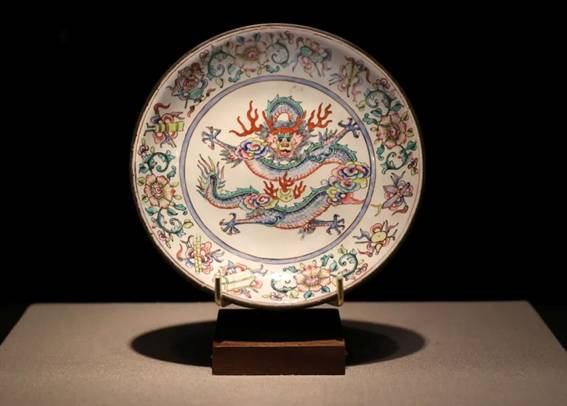
Plate with a Dragon Design
Qianlong or Jiaqing period of the Qing dynasty
����This plate is a dragon pattern plate, the front is painted with a dragon playing with pearls, and the rim of the plate is embellished with "Dark EightImmortals" between the passion flowers. The Eight Immortals are holding magic weapons, which are separated from the figures to form the Dark Eight Immortals pattern. Both the Eight Immortals and the Dark Eight Immortals motifs are auspicious motifs of peace and good fortune, happiness and longevity.
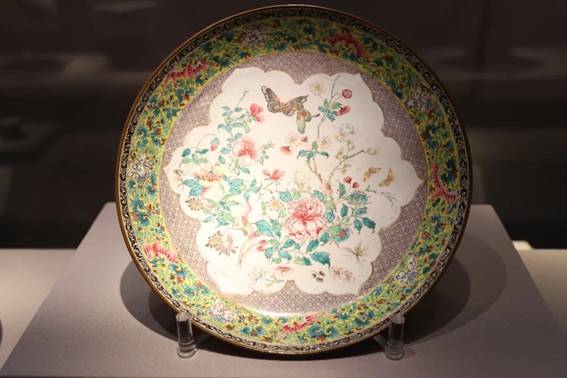
Plate with Flowers and Butterflies in Framed Panels on Brocade Backgrounds
Yongzheng period of the Qing dynasty
����The brocade pattern is a common decoration of early Canton enamel, and its pattern is a direct copy of the various brocade patterns that were popular at the time. This plate is painted from the outside to the inside with green eight-square brocade pattern, pink four-square brocade pattern
����and blue locks pattern. These patterns have different forms and all belong to brocade patterns.
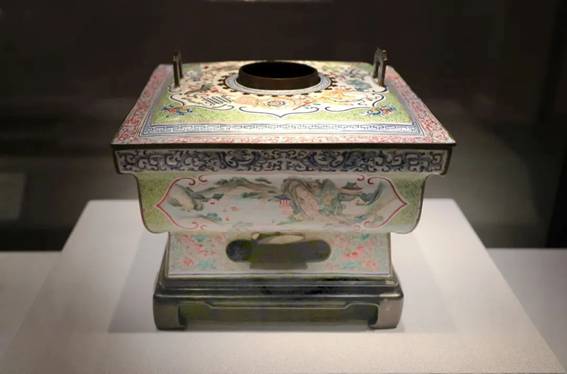
Hot Pot with Landscapes in Framed Panels on Brocade Backgrounds
Qianlong or Jiaqing period of the Qing dynasty
����The four sides of the hot pot are painted with landscapes, houses, children, farmers and other scenes of life, which are very interesting. The outer part of the opening is decorated with various patterns such as the �d pattern, the �� pattern, the Ruyiyuntou pattern, the kuifeng pattern, the dragon pattern, the Interlocking Lotus pattern and the bat pattern, which are rich and varied.
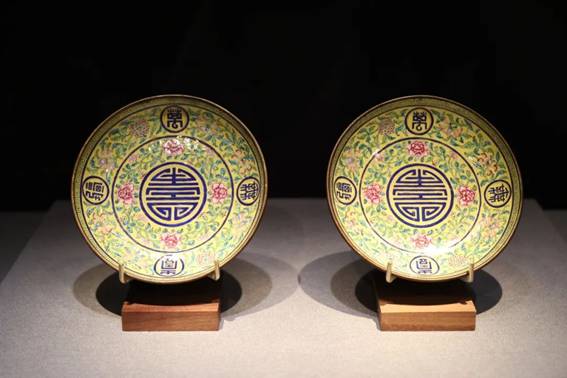
Pair of Plates with Floral Sprays and Characters for Longevity
Qianlong period of the Qing dynasty
����This plate was customized for the Longevity Festival. Longevity Festival first originated in Tang Xuanzong, in the 17th year of the reign of Emperor Kaiyuan (729), on the 5th day of the 8th month, hundred Chinese Ministers officials were invited to the Calyx House, which was called the Thousand Autumns Festival. Emperor's birthday in the Qing Dynasty called Longevity Festival, together with New Year's Day and the winter solstice became the three major festivals of the Qing dynasty.
